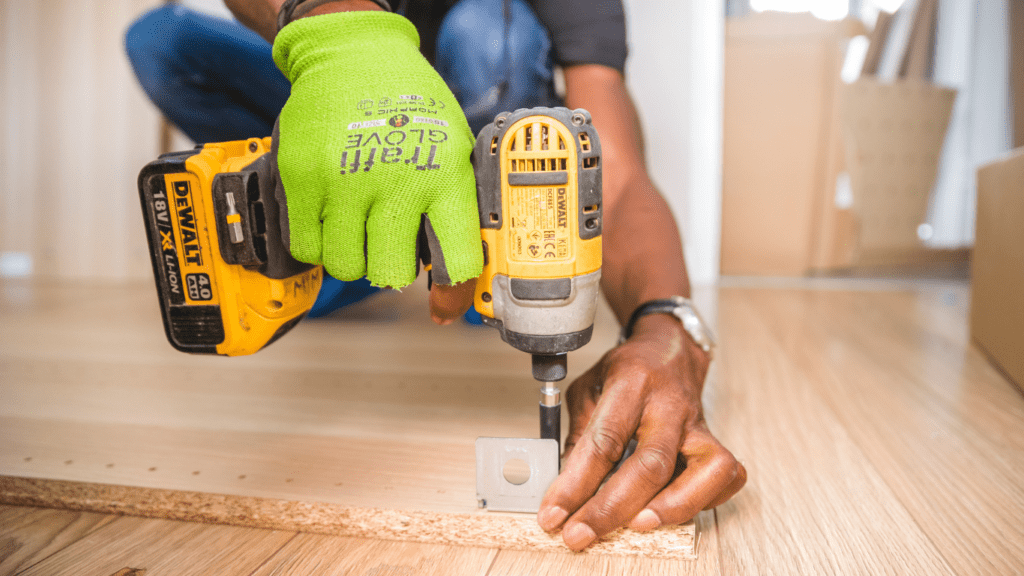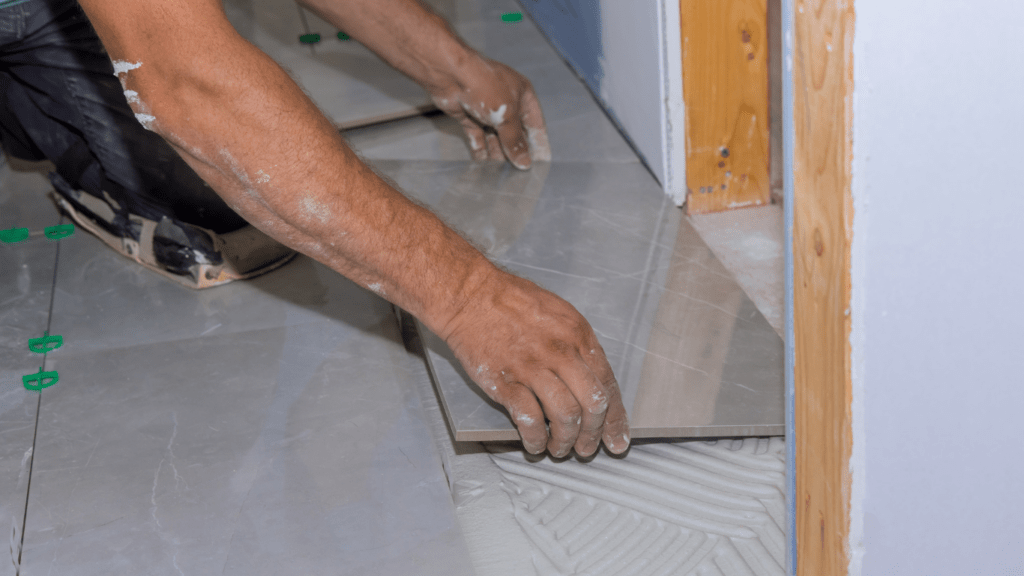Embarking on a do-it-yourself (DIY) home renovation project can be both exciting and daunting. As someone who has tackled various home improvement ventures, I understand the importance of meticulous planning to ensure a successful outcome.
From envisioning your dream space to managing the nitty-gritty details, every step plays a crucial role in the renovation journey. In this article, I’ll share valuable insights on how to effectively plan a DIY home renovation that not only meets your expectations but also stays within your budget and timeline.
By outlining key considerations, setting realistic goals, and leveraging useful resources, you can navigate the renovation process with confidence and achieve remarkable results. Whether you’re revamping a single room or taking on a whole-house makeover, proper planning is the cornerstone of a successful DIY renovation project.
Researching Your DIY Home Renovation Project
When researching your DIY home renovation project, I recommend starting by exploring design ideas. Look for inspiration from home improvement websites, magazines, or even by visiting model homes in your area to get a sense of your style preferences.
It’s essential to collect images and notes of elements you like to create a cohesive vision for your project. Next, delve into the practical side of your renovation. Research building codes and permit requirements in your area. Understanding these regulations is crucial to ensure your project meets legal standards.
Check with local authorities or consult with a professional to clarify any doubts about what is permissible in your region. Additionally, researching the costs associated with your renovation is key. Get estimates for materials, labor, and any tools you may need.
Compare prices from different suppliers and consider factors like quality and warranty when making purchasing decisions. It’s also wise to set aside a contingency fund for unexpected expenses that may arise during the renovation process.
Lastly, when researching your DIY home renovation project, explore DIY tutorials and guides related to the specific tasks you’ll be undertaking. Whether it’s installing new flooring, painting cabinets, or remodeling a bathroom, watching instructional videos or reading step-by-step articles can provide valuable insights and tips to help you execute your project effectively.
Setting a Realistic Budget
When planning a DIY home renovation, one of the crucial aspects to consider is setting a realistic budget. Based on my experience, I understand the significance of allocating funds effectively to ensure the project’s success. To achieve this, I recommend following these essential steps:
- Evaluate Your Finances: Before diving into any renovation project, it’s vital to assess your current financial situation realistically. Review your savings, available credit, and any potential sources of funding to determine how much you can allocate to the renovation without straining your finances.
- Research Costs: Conduct thorough research on the costs of materials, tools, and potential labor for your renovation project. Gather quotes from multiple suppliers and contractors to compare prices and find the most cost-effective options without compromising on quality.
- Create a Detailed Budget Plan: Once you have a clear understanding of the expenses involved, create a detailed budget plan outlining all projected costs. Be sure to include room for unexpected expenses by setting aside a contingency fund of at least 10-20% of your total budget.
- Prioritize Essential Components: Identify the key areas of your renovation that require the most significant investment. Allocate a larger portion of your budget to essential components such as structural repairs, electrical upgrades, or plumbing work, before considering cosmetic enhancements.
- Seek Cost-Saving Alternatives: Explore cost-saving alternatives for materials and labor without compromising on the quality of your renovation. Consider repurposing existing materials, opting for energy-efficient fixtures, or tackling certain tasks yourself to cut down on expenses.
By following these steps and setting a realistic budget for your DIY home renovation, you can ensure that your project stays on track financially, allowing you to achieve your desired results within your means.
Choosing the Right Tools and Materials
When it comes to a DIY home renovation, selecting the correct tools and materials is crucial for a successful outcome. Equipping yourself with the appropriate tools ensures efficient work, while using quality materials guarantees a durable and aesthetically pleasing result.
Here are some tips to help you make the right choices:
- Research Tools: Before starting your renovation project, research the specific tools needed for each task. Make a list of essential tools like hammers, saws, drills, and screwdrivers. Consider renting larger or specialized tools to save money if you won’t use them regularly.
- Quality over Price: Opt for tools of decent quality that can withstand the demands of your project. While it’s tempting to choose the cheapest option, investing in durable tools will save you from replacements and frustration in the long run.
- Material Selection: Select materials that align with your renovation goals in terms of durability, style, and budget. Whether it’s flooring, paint, or fixtures, ensure that the materials you choose complement the overall design and meet your functional requirements.
- Eco-Friendly Options: If sustainability is a priority, explore eco-friendly materials like bamboo flooring, recycled glass countertops, or low VOC paints. These choices not only benefit the environment but also enhance the indoor air quality of your home.
By carefully considering your tool and material choices, you can streamline your DIY renovation process and achieve the desired results efficiently and effectively.
Planning the Renovation Timeline
When approaching a DIY home renovation project, scheduling is key. I’ll guide you through planning a detailed timeline that ensures a smooth and efficient execution of your renovation plans.
Let’s delve into the essential steps for creating a successful renovation timeline:
- Assess Project Scope: Begin by assessing the scope of your renovation project. Identify the specific areas of your home that require improvement and outline the tasks involved in each segment. Breaking down the project into smaller tasks helps in setting realistic timelines for completion.
- Set Clear Milestones: Create clear milestones for your renovation project. These milestones act as targets to track progress and ensure that the project stays on schedule. Assign specific dates for completing major tasks such as demolition, electrical work, plumbing installations, and finishing touches.
- Consider Seasonal Factors: Factor in seasonal considerations when planning your renovation timeline. Certain tasks may be weather-dependent, so plan accordingly to avoid delays. For example, exterior painting or landscaping work might be best scheduled during milder seasons for optimal results.
- Account for Lead Times: Account for lead times when ordering materials and hiring professionals. Some materials may have long delivery times, and skilled contractors may need to be booked in advance. Plan ahead to prevent delays caused by waiting for essential components or services.
- Allocate Buffer Time: It’s crucial to allocate buffer time in your renovation timeline to account for unexpected delays or issues that may arise during the project. A buffer allows for flexibility and ensures that you can address any unforeseen challenges without disrupting the overall schedule.
By following these steps and crafting a comprehensive renovation timeline, you’ll be better prepared to tackle your DIY home renovation project efficiently and effectively. Planning ahead and structuring your timeline thoughtfully will help you navigate the renovation process with confidence, ultimately leading to successful results.
Executing Your DIY Home Renovation
Moving from the planning stage to the execution phase of your DIY home renovation is an exciting transition. Now that you’ve done your research, set a budget, and planned your timeline, it’s time to roll up your sleeves and bring your vision to life. Here are the crucial steps to ensure a successful execution of your renovation project:
1. Start with a Small Task
Kick off your DIY home renovation by starting with a small task. Whether it’s painting a room, installing new hardware, or laying down new flooring, beginning with a manageable project allows you to build momentum and gain confidence for more significant tasks ahead.
2. Follow Safety Precautions
Before diving into any renovation work, prioritize safety. Ensure you have the necessary safety gear, such as goggles, gloves, and masks, to protect yourself during the renovation process. Familiarize yourself with the proper use of tools and equipment to avoid accidents and injuries.
3. Maintain Open Communication
If your renovation project involves multiple people, maintain open communication with them throughout the process. Whether it’s family members, friends, or hired professionals, clear communication ensures everyone is on the same page regarding tasks, timelines, and expectations, fostering a collaborative and efficient work environment.
4. Monitor Progress Consistently
Tracking progress is key to staying on schedule and within budget. Regularly evaluate the status of your renovation project against the established timeline and budget plan. Identify any deviations early on and make necessary adjustments to prevent delays or overspending.
5. Adapt to Challenges
During the execution of your DIY home renovation, you may encounter unexpected challenges or setbacks. Instead of getting discouraged, approach these hurdles as opportunities to problem-solve and improve your skills. Stay adaptable and be prepared to adjust your plans when needed to overcome obstacles effectively.
6. Celebrate Milestones
As you make progress with your DIY renovation, take the time to celebrate milestones along the way. Whether it’s completing a phase of the project, achieving a challenging task, or staying within budget, acknowledging these milestones motivates you to continue working towards your renovation goals with enthusiasm.
By following these essential steps, you can navigate the execution phase of your DIY home renovation confidently and achieve remarkable results that enhance your living space.





